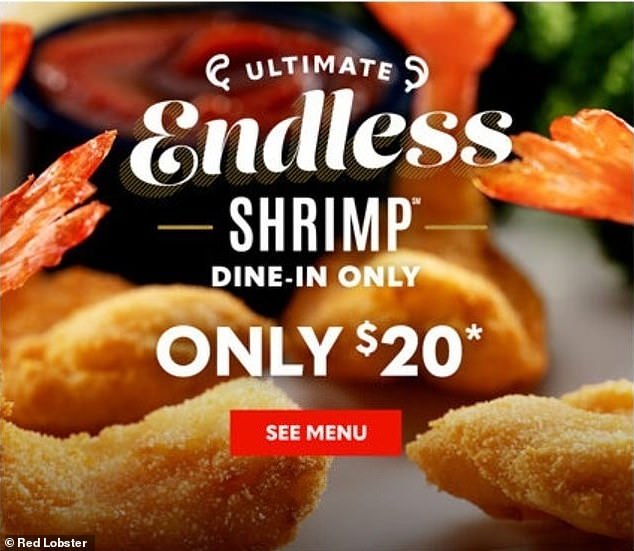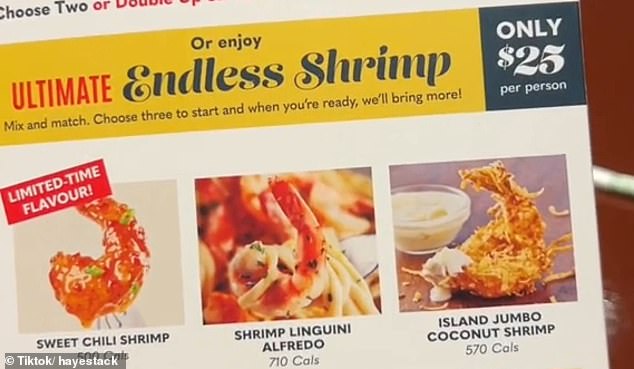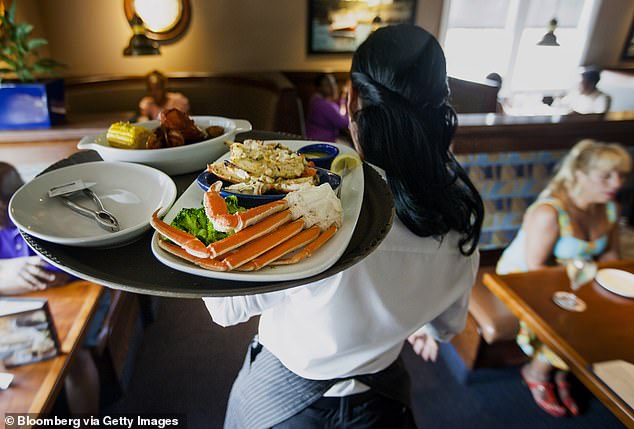Red Lobster is willing to close another batch of more than 100 restaurants if it can’t renegotiate cheaper rents with its landlords.
The seafood chain abruptly closed 93 of its roughly 700 restaurants on May 13 and filed for Chapter 11 bankruptcy the following week in hopes of being able to restructure its debts.
New court documents reveal there are another 135 restaurants that bosses say will continue to lose money if leases remain as they are. Restaurant Business reported. The option is for the company to pay less rent or close them.
They include the iconic Times Square location that the company says it is trying to keep open, according to the New York Post.
The restaurant’s owner is reportedly doubling the venue’s rent to $2.2 million a year, posing a threat to the 22-year lease.
Red Lobster to close another 100 restaurants if it can’t renegotiate cheaper rent

The endless shrimp started at $20 but were too popular and cost millions of dollars.
Red Lobster has just weeks to reach an agreement with the landlord, as the new lease will begin on June 30.
The decision to include the high-profile location on its list of rejected leases “could be a way to put pressure on the landlord,” bankruptcy attorney Patrick Collins told The Post.
“It’s a way for the company to signal to the owner that unless something changes, they are prepared to close that store,” Collins added.
Bankruptcy court documents show there were a total of 228 leases that the company estimated will continue to lose money unless the rent is reduced.
This includes many of the 93 that have already closed, leaving 135 at risk of closure.
Red Lobster’s roots date back to 1968, when the first restaurant opened in Lakeland, Florida.
The casual dining favorite officially filed for Chapter 11 bankruptcy on May 19.
Before filing for bankruptcy, restaurant liquidator TAGeX Brands auctioned off the equipment of 48 closed Red Lobster locations.
Its current problems have been attributed to rising leasing and labor costs in recent years and its infamous $20 all-you-can-eat shrimp deal that failed.
The offering, launched last June as a permanent menu item, is nearly identical to a 2003 deal, and the problems it caused are nearly identical, too.
Back then, it was “endless crab.” It was great for hungry seafood lovers, but a disaster for the restaurant: When it was pulled offline, after just seven weeks, Red Lobster had lost $3.3 million.
“It wasn’t the second serving of all-you-can-eat, but the third” that hurt profits, a Red Lobster executive told analysts at the time, in 2003.
This time, the offer was also very popular: some customers stayed for hours to see how many they could eat. One girl achieved 108 in four hours.

The chain’s bankruptcy comes after the disastrous ‘endless shrimp’ promotion, which started at $20 and rose to $25.
“I set a new record at my local Red Lobster, this is the greatest achievement of my life,” the poster explains in his video.
More people began to take advantage of the offer than the company expected. But rather than cancel the deal, the bosses kept it going for six months, and the losses dwarfed the amount lost to endless crabs 20 years earlier.
Seafood lovers devouring shrimp platters was the key reason Red Lobster’s majority owner, Thai Union, lost $11 million in just three months, shortly after the deal began.
Ludovic Garnier, chief financial officer, said: “We knew the price was cheap, but the idea was to attract more traffic to the restaurants.”
“So we wanted to increase our traffic and it didn’t work.”
‘For those who have been to the United States recently, $20 was very cheap. And the reason for this promotion was to say that we knew the price was cheap, but the idea was to attract more traffic to the restaurants,” CFO Ludovic Garnier said in November.
“But what differs from our expectations is that the proportion of people who selected these promotions was much higher compared to expectations,” he added.


